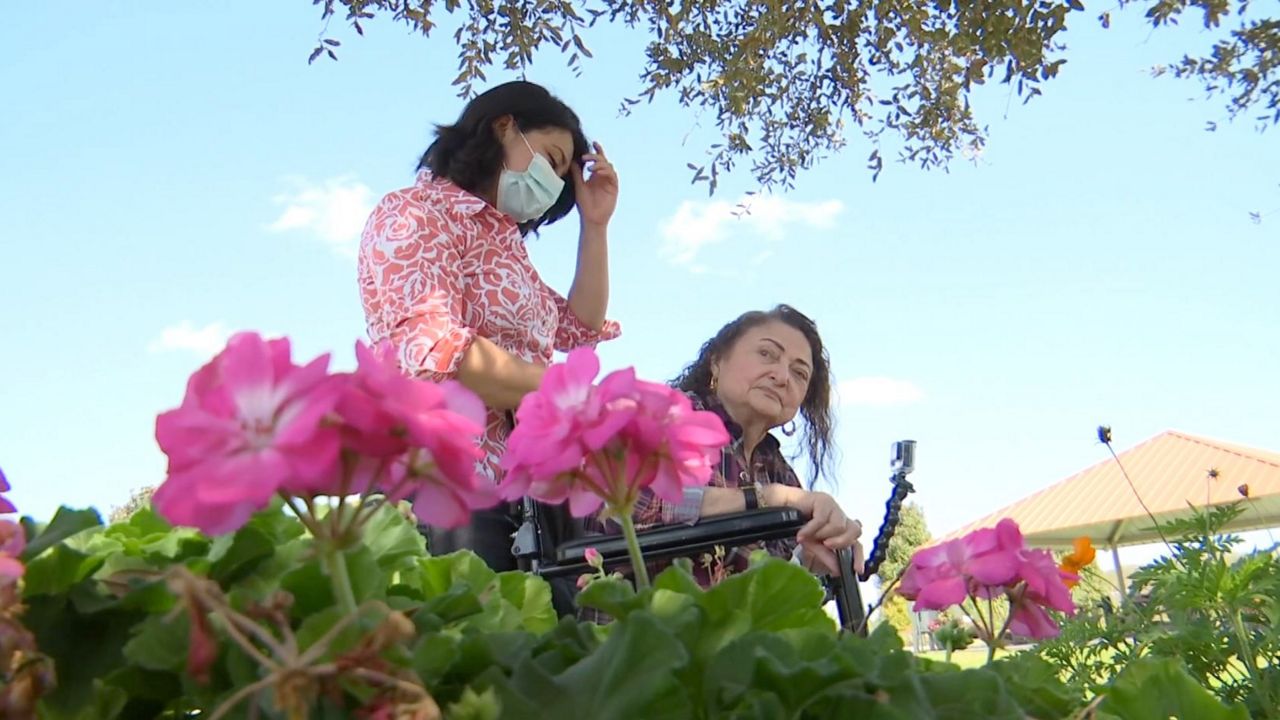WISCONSIN — The Alzheimer’s Association released its 2023 report, “Alzheimer’s Disease Facts and Figures.”
In Wisconsin alone, the report estimated there are 191,000 Alzheimer’s family caregivers, caring for more than 120,000 people 65 and older with Alzheimer’s. The work they’re doing is going unpaid.
Those family caregivers are estimated to provide 213 million hours of unpaid care each year, which the report valued at $3.97 billion.
By 2025, 130,000 Wisconsinites 65 and older are expected to have Alzheimer’s. That's an 8.3% increase in just 5 years.
“The new Facts and Figures report shows that Alzheimer’s disease and other dementias continue to be a significant burden for too many Wisconsin families,” said Dave Grams, executive director, Alzheimer’s Association Wisconsin Chapter. “It’s critical to continue to work toward advancing new treatments that can stop or slow the progression of Alzheimer’s, while also continuing to provide care and support services to help all those affected.”
In 2017, 5,086 (16%) of Wisconsinites in hospice care had a primary diagnosis of dimentia. Per every 1,000 Wisconsinites with dimentia, there were 1,520 visits to a hospital emergency depatrment in 2018. Hospital patients with dimentia had a 19.9% readmission rate that year.
Care is costly, too. In 2020, Medicaid costs of caring for Wisconsinites with Alzheimer's totaled in at $777 million. That total is expected to rise by 18.9% by 2025.
Wisconsin is just one piece of the puzzle. Nationally, there were 6.5 million Americans 65 and older living with Alzheimer’s in 2022. That number jumped to 6.7 million by 2023. By 2050, about 13 million Americans are expected to have Alzheimer’s.
About one in nine people 65 and older have Alzheimer’s, and one in three seniors dies with Alzheimer’s or another form of dementia. In 2019, 2,390 Wisconsinites died from Alzheimer's.
Nationally, the number of people 65 to 75 who died from Alzheimer’s rose by 33% from 2000 to 2019. For people 75 to 84, the death rate rose by 51%. The death rate rose by 78% for people 85 and older.
In 2022, 11 million people acted as a family caregiver for someone with Alzheimer’s or another form of dementia, according to the report, accounting for 18 billion hours of unpaid care. The report valued those hours at at least $339.5 billion.
Dementia caregivers reported higher rates of depression than caregivers for other conditions. Thirty to 40% of dementia caregivers reported depression, while 20% of those who care for schizophrenia reported depression. Nineteen percent of those who care for someone who has had a stroke reported depression.
Among unpaid dementia caregivers, 59% reported emotional stress, while 38% reported physical stress from caregiving. When compared to other caregivers and non-caregivers, they also reported higher rates of chronic conditions including but not limited to stroke, heart disease, diabetes and cancer.
Alzheimer’s Association said about two-thirds of Alzheimer’s caregivers are women. More than half of caregivers are caring for a parent or in-law with Alzheimer’s.
In Wisconsin in 2021, 53.4% of caregivers reported chronic health conditions; 22.4% reported depression and 10.5% reported being in poor physical health.
When it comes to direct caregivers — including nurse aides, nursing assistants, home health aides and personal care aides — Alzheimer’s Association said Wisconsin is looking ahead to a shortage, in line with nationwide concerns. Those caregivers can be found working in places such as private homes, community-based settings and skilled nursing homes.
From 2020 to 2030, Alzheimer’s Association estimated the U.S. will need about 1.2 million new direct caregivers.
Among current primary care physicians, 55% said there are not enough dementia care specialists to meet demands locally.
“The shortage of dementia care specialists is a barrier to a timely and accurate diagnosis, and a lack of diagnosis means a delay in treatments, care delivery and supportive services,” the Alzheimer’s Association said in a press release.
In Wisconsin, there are 83 geriatricians, primary care doctors who are specialized in treating older adults. To meet demand by 2050, that would need to increase by 228.9%.
In 2020, Wisconsin had 77,810 health and person care aides. To meet demand, that number would have to rise by 18.6% in 2030.
Read the full report below:
Alzheimer's Facts and Figures 2023 by Aly Prouty on Scribd



